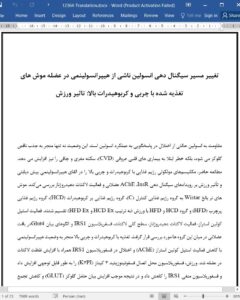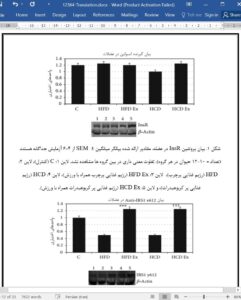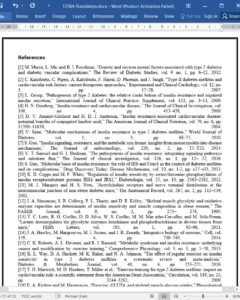Insulin resistance is a state of impaired responsiveness to insulin action. This condition not only results in deficient glucose uptake but increases the risk for cardiovascular diseases (CVD), stroke, and obesity. The present work investigates the molecular mechanisms of high carbohydrate and fat diet in inducing prediabetic hyperinsulinemia and effect of exercise on InsR signaling events, muscular AChE, and lactate dehydrogenase activity. Adult male Wistar rats were divided into the control (C) diet group, high-carbohydrate diet (HCD) group, high-fat diet (HFD) group, and HCD and HFD groups with exercise (HCD Ex and HFD Ex, respectively). Acetyl choline esterase activity, lactate dehydrogenase activity, total lactate levels, IRS1 phosphorylations, and Glut4 expression patterns were studied in the muscle tissue among these groups. High carbohydrate and fat feeding led to hyperinsulinemic status with reduced acetylcholine esterase (AChE) activity and impaired phosphorylation of IRS1 along with increased lactate concentrations in the muscle. Exercise significantly upregulated phosphoinositide 3 kinase (PI3K) docking site phosphorylation and downregulated the negative IRS1 phosphorylations thereby increasing the glucose transporter (GLUT) expressions and reducing the lactate accumulation. Also, the levels of second messengers like IP3 and cAMP were increased with exercise. Increased second messenger levels induce calcium release thereby activating the downstream pathway promoting the translocation of GLUT4 to the plasma membrane. Our results showed that the metabolic and signaling pathway dysregulations seen during diet-induced hyperinsulinemia, a metabolic condition seen during the early stages in the development of prediabetes, were improved with vigorous physical exercise. Thus, exercise can be considered as an excellent management approach over drug therapy for diabetes and its complications.
1. Introduction
Type 2 diabetes mellitus is a complex metabolic disease with an environmental and genetic component affecting over 5% of the population in Western societies. Recent data from the World Health Organization Multinational Study of Vascular Disease in Diabetes indicate that the main cause of mortality (52% of deaths) in type 2 diabetes patients is due to CVD [1, 2]. Several studies suggest 3 phases for type 2 diabetes mellitus development: hyperinsulinemia stage, prediabetes stage, and diabetes stage [3]. While most of the studies focus on the diabetes stage, the prevalence of hyperinsulinemia and associated multiple abnormalities is less studied. Approximately one-third of ingested glucose is used by the liver and the rest by peripheral tissues, primarily the skeletal muscle via an insulin-dependent mechanism.
5. Conclusion
Our molecular data showed that diet-induced prediabetic hyperinsulinemia resulted in impaired insulin signaling and multiple postreceptor intracellulardefects including impaired glucose transport and metabolism. The most effective approach to improve insulin resistance and to reduce cardiovascular risk is appropriate changes in lifestyle. Hence, our study reinforces the importance of regular exercise, as the therapeutic management of insulin resistance by slowing or reversing the progression to diabetes and reducing the morbidity and mortality due to complications associated with diabetes.











